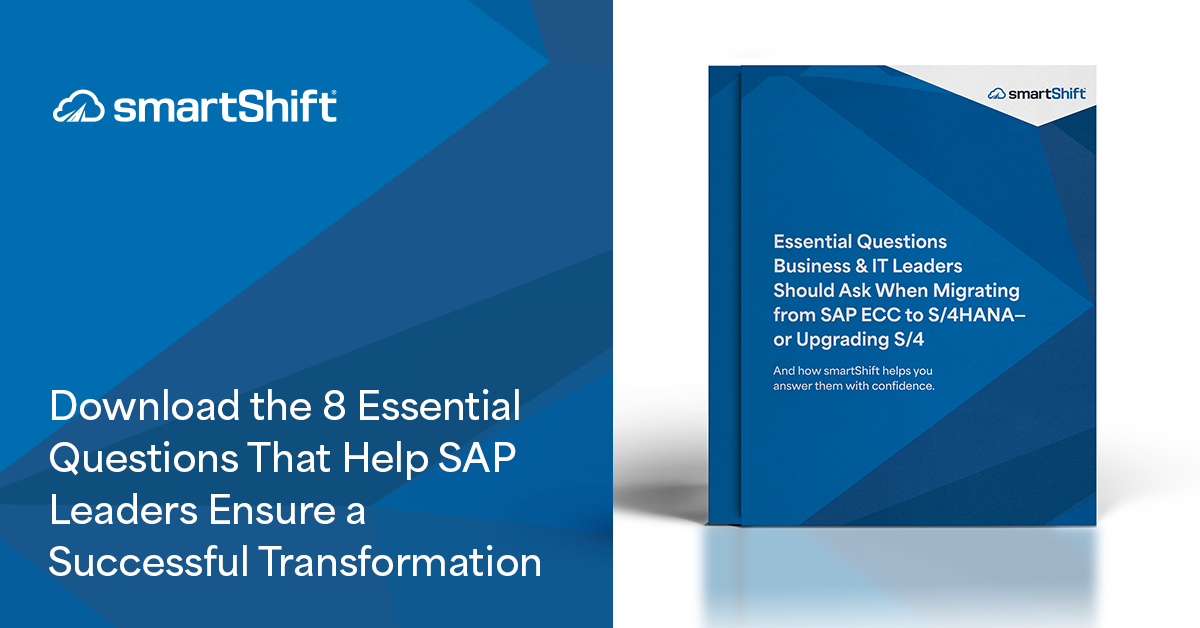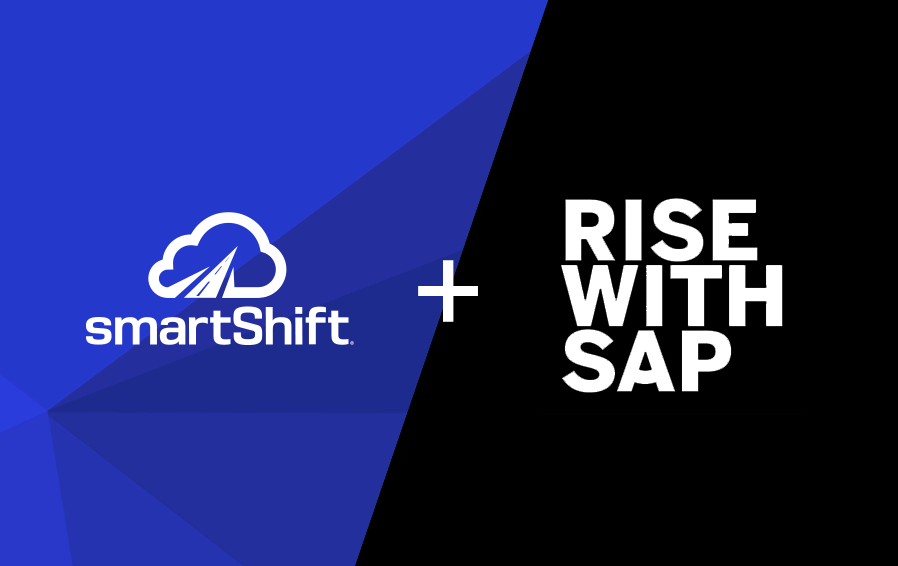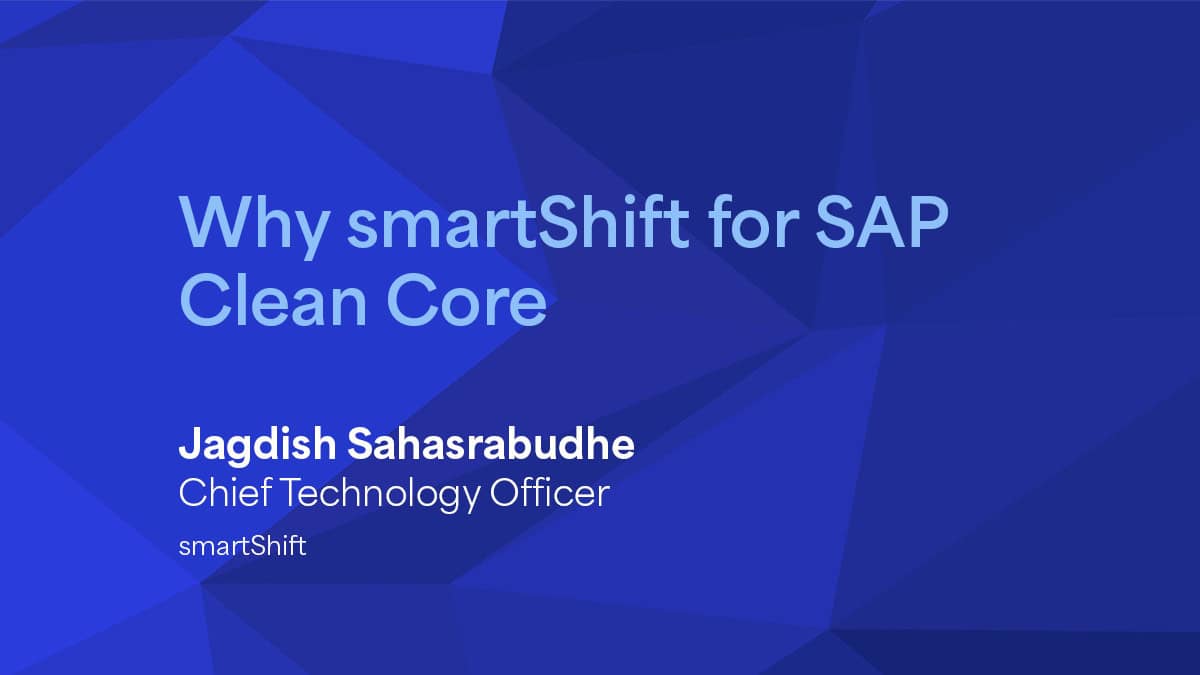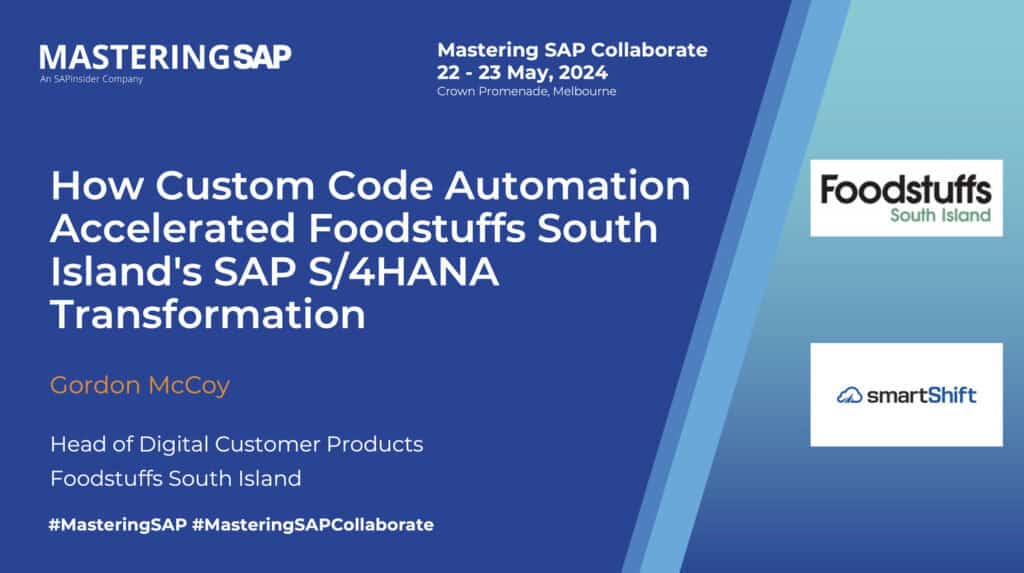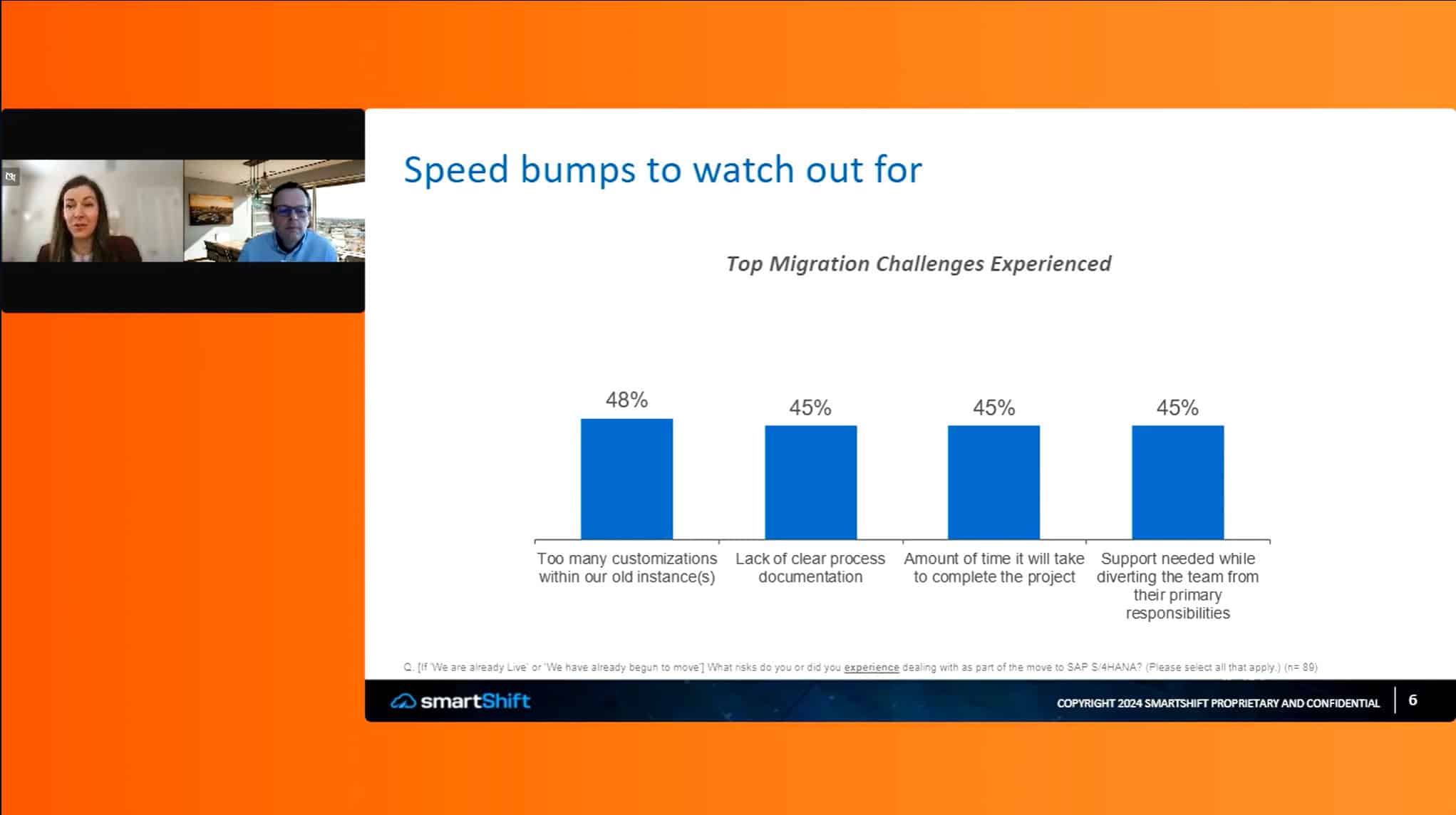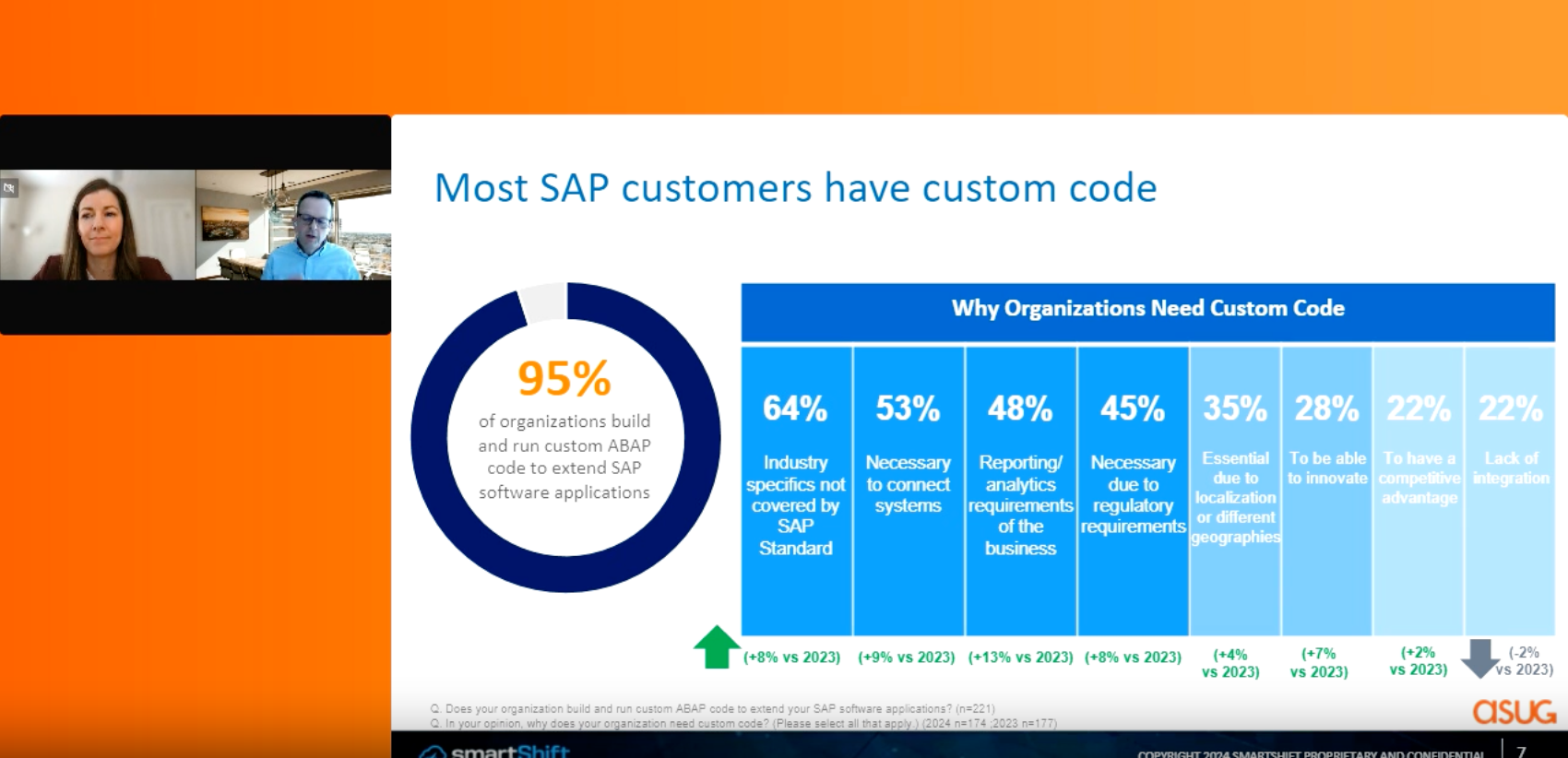What is SAP Clean Core? And What Does It Mean for My Customizations?
August 21st, 2024
3 min read


Chief Technology Officer, smartShift
What is SAP Clean Core? This is a question that is being asked more and more as I meet with our customers. SAP is talking about it – a lot. It was in almost every presentation at Sapphire. Given there’s so much talk about it, I thought I’d share my thoughts on SAP Clean Core and how it relates to custom code.
What is Clean Core in SAP?
“Core”
First, let’s start with the Core part…In the context of enterprise system architecture, the term “Core” refers to the central part which provides its essential and foundational capabilities. For SAP applications, the “Core” refers to the standard business processes, application functionality, configuration options, interfaces, data integrity and much more that SAP delivers “out of the box” to its customers. SAP’s product and engineering teams are constantly looking at evolving market requirements and keep adding new innovations to the Core, delivering these as upgrades.
SAP Clean Core is a concept that describes a strategy for keeping the “Core” as standard and uncluttered as possible. But, the problem is most customers are in the situation where they have an unclean Core. Why is this?
“Clean”
Every company has unique business processes, and the standard SAP functionality usually doesn’t fully align with those needs. Customizations allow companies to tailor the system to their specific workflows, industry requirements, regulatory or localization obligations. Some companies customize to implement unique processes that provide a competitive edge. Customizations can be made to improve the user interface or user experience, making the system more intuitive to use for employees.
The problem is not with customizations, these will continue in the future. However, due to lack of published methodologies and governance around extensibility, scarcity of functionally robust APIs and minimum extensibility hooks across the application modules, such customizations were performed by changing the Core.
SAP ERP systems deployed over the last two decades continued to be customized in this manner resulting in thousands of custom objects with millions of lines of custom code developed by multiple system integrators, internal developers and contractors. This has resulted in unmanaged growth of “spaghetti code” with no governance, no overall visibility for effective management and barely sufficient documentation. As a result, custom code has accumulated risks with hundreds of issues related to security, performance and stability. All of this makes it impossible to go from Unclean to Clean Core overnight with a one time transformation.
SAP Clean Core Strategy
Therefore, SAP’s Clean Core strategy is being executed as a journey that takes customers from their current state to one of being cleaner, identifying manageable projects of high value, and a quick turn around. Through the journey there will be a need for governance so technical debt doesn’t accrue again. And, development of all future custom extensions will need to follow the SAP Clean Core recommendations.
While each customer will follow a path that is best suited to their situation, there are several common goals to achieve:
- decommissioning unused custom objects
- migrating to key user extensions
- maximizing use of released APIs and CDS views
- modernizing to ABAP cloud syntax
- reducing security and instability issues
- moving to standard SAP delivered functionality
- re-designing to loosely coupled SAP RAP development particularly to make use of API wrappers
- re-platforming to side-by-side modern development paradigms such as SAP BTP
So, how does one embark on the SAP Clean Core journey? The first step is to know the current state, identify and get deeper visibility into the totality of the custom code, contextualize the analysis with application modules and identify areas of priority. You should also understand what code is not being used so it can be decommissioned. No one wants to waste time remediating code that isn’t used any more.
And, you’ll want to do it all with data driven planning so you know all the challenges and can plan with confidence. Understanding the issues before starting and correcting them, will only make your transformation more successful. Remember… what you don’t know is what you don’t know.
But, once you complete addressing your issues, it will lay the foundation for a flexible, future-ready SAP ERP that carries lower technical debt, provides stability and allows for easier adoption for future innovations from SAP through faster and cheaper upgrades.
Clean Core Analysis
smartShift has made it easy for you to get started on Clean Core with our three step methodology. Let’s do a Clean Core Analysis Repository Analysis for your custom code to get you going. You can request your analysis here —>
SAP Clean Core: Opportunities and Challenges of the New Clean SAP World.
Want to learn more? Watch the replay of our ASUG Webcast with our CEO, Derek Oats. –> Watch the replay here.
The concept of “SAP Clean Core” promises a way out of slow and costly release cycles. SAP innovations can be adapted more quickly and the entire system becomes more agile. However, the path to a clean core can be rocky, especially in the case of mature, customized SAP landscapes. Pragmatism is required here.
Find out more about how smartShift can help you reach a Clean Core much faster and with less risk.
Key Takeaways:
✅ Discover the concept of clean core.
✅ Understand the challenges and opportunities of custom code.
✅ Explore the benefits of automation versus traditional transformation approaches.
As the Chief Technology Officer at smartShift, he brings over 25 years of experience in product strategy, SAP applications, and enterprise AI. Previously, he served as SAP's field CTO, where he worked with ISVs and channel partners to align complex technologies with market needs. He has earned multiple accolades, including the SAP Innovation Award (2005). His leadership roles across startups and large enterprises, along with recognition such as the Zinnov Start-up Beacon Award (2014), uniquely position him to drive innovation and growth at smartShift.
Topics:

